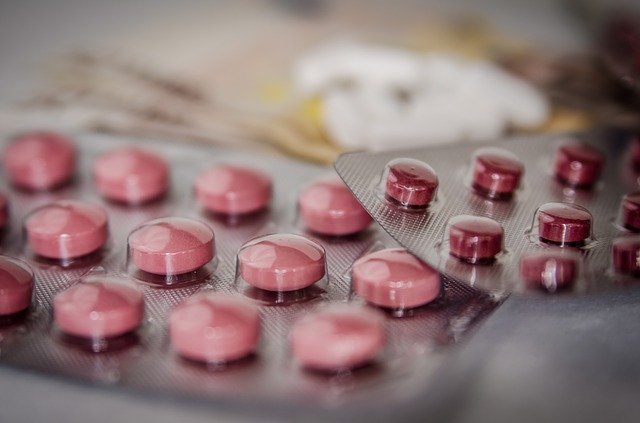Stages of Hypertension
Covering stages of hypertension such as prehypertension, stage 1 hypertension and stage 2 hypertension in the context of the JNC7 recommendations

Stages of hypertension refer to the classification of high blood pressure progression as it is found and diagnosed in different patients. Hypertension a medical term for high blood pressure occurs in a significant segment of any given population. The causes of hypertension might be known in which case this is considered secondary hypertension. They may also be unknown and this is called primary essential hypertension. High blood pressure numbers are presented as a systolic reading and a diastolic reading. The systolic reading is on top and bigger than the bottom diastolic reading.
The concept of stage of hypertension was determined in the U.S. by the Joint National Committee on Prevention, Detection, Evaluation and Treatment of High Blood Pressure (JNC7). The JNC7 is a team of experts that was assembled by the National Heart, Blood and Lung Institute (NABLI). High blood pressure diagnosis requires that more than one blood pressure measurement is taken. This is important information to know especially for individuals who take blood pressure at home using home blood pressure monitors.
It is in this context that in 2003 the JNC7 sought to define stages of hypertension based on an average of two or more blood pressure readings taken whilst one is seated and completed in two or more doctor's office visits. The JNC7 particularly merged previously considered three different hypertension stages into two stages and created a third yet broader stage known as hypertension stage 2. The following are stages of hypertension developed and published by the JNC7. These are now commonly used across the world by different hypertension experts and doctors;
Hypertension Stages: Prehypertension
Prehypertension involves slightly elevated blood pressure above what night be considered ideal blood pressure. Slight blood pressure elevation occurs in prehypertension before the onset of high blood pressure or hypertension. Prehypertension also heightens your risk of suffering a stroke, heart attack or heart failure. A prehypertension blood pressure measurement has a systolic reading of between 120 and 139 mmHg and a diastolic pressure of between 80 and 89 mmHg. An individual experiencing the prehypertension stage of hypertension must as quickly as possible implement lifestyle modifications to prevent a jump to the next stage of hypertension.
Lifestlye modifications will include eating healthy, eating foods that lower blood pressure, exercises, quitting smoking and drastically cutting back on alcohol consumption as well as salt intake. Hypertension medications are rarely used at this early stage of high blood pressure. Doctors usually rely on hypertension guidelines which in this case recommend lifestyle changes. An important point to note is that the prehypertension stage has no symptoms. In fact hypertension symptoms as a whole can be considered a rare occurrence until the condition is advanced. It is therefore a good investment to purchase one of the best blood pressure monitors on the market in the absence of any early meaningful and certain symptoms. Having your blood pressure checked regularly is key to preventing hypertension.
Stages of Hypertension: Hypertension Stage 1
Stage 1 hypertension is considered to be blood pressure of readings 140/90mmHg. It is still considered an early form of high blood pressure which precedes the prehypertension stage. Of the two stages of hypertension i.e prehypertension and stage 1 hypertension this stage involves the introduction of high blood pressure medications to control and better manage the high blood pressure. Hypertension in the context of primary hypertension cannot be cured. All that doctors do is to control it using anti-hypertensive drugs and lifestyle modifications. Frequent monitoring of the blood pressure is also very important in order to prevent it from progressing to stage 2 hypertension.
In terms of medication, the JNC7 recommended that stage 2 hypertension be treated using a particular diuretic called thiazide. This drug lowers blood pressure by excreting excess water and sodium from the body.
Stages of Hypertension: Hypertension Stage 2
Hypertension stage 2 has a systolic blood pressure greater than 160mmHg and a diastolic pressure of value greater than 100mmHg. At stage 2, things are getting serious and medication will be required immediately. Left alone organ damage will result. Hypertension treatment is almost certainly accompanied by lifestyle changes besides taking medications. There are different reasons why individuals may fail to control their blood pressure until is reaches stage 2. This includes resistant hypertension and outright ignorance that one has high blood pressure due to missing symptoms.
Being unaware of the fact that one has high blood pressure is very common in huge segments of societies across the world. Stage 2 hypertension is pharmacological treated using combo drugs which include a diuretic and another type of anti-hypertensive drugs. Treatment choice is further influenced by other possibly existing underlying medical conditions such as heart disease, diabetes, kidney disease and renovascular hypertension. Stage 2 hypertension is also known as late high blood pressure or severe high blood pressure.

Return to Hypertension Guidelines from Stages of Hypertension
Return to Hypertension Home from Stages of Hypertension
Disclaimer
Information contained on this website is not meant to replace your doctor's advice.
(c) All Rights Reserved. 2010-2018











